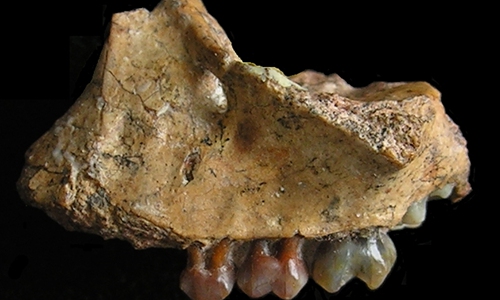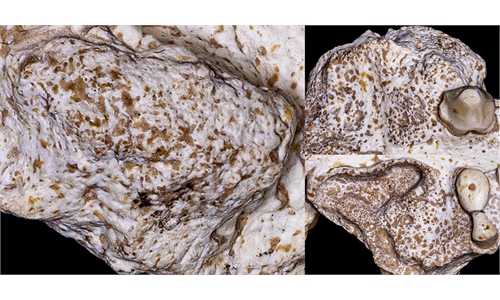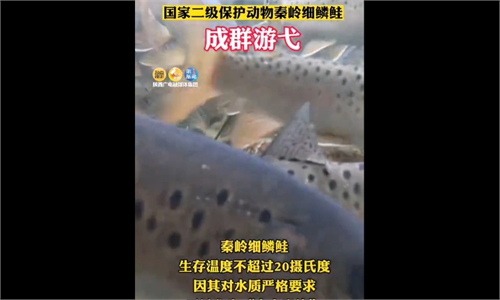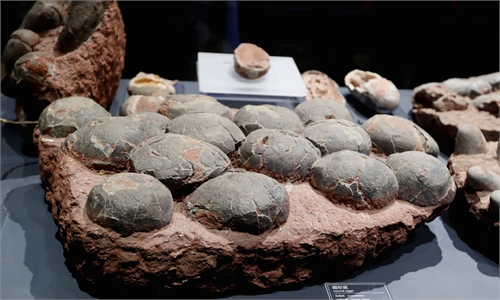
The upper jaw of the infant of Yuanmoupithecus xiaoyuan Photo: Kunming Institute of Zoology of the Chinese Academy of Sciences
A small ape fossil discovered in Yuanmou, Southwest China's Yunnan Province has been proved to be the earliest gibbon fossil ever found. The discovery pushes the gibbon fossil record back 7 million to 8 million years and helps Chinese and US scientists fill a long-elusive evolutionary gap in the history of small apes in East Asia.
The specific fossil belongs to a species of small apes called Yuanmoupithecus xiaoyuan, part of a family of apes including 20 species of living gibbons found throughout tropical and subtropical Asia. There currently exist four to six species in China.
Ji Xueping, a researcher from the Kunming Institute of Zoology of the Chinese Academy of Sciences who led the research with Terry Harrison, professor from the Department of Anthropology of the New York University, told the Global Times on Tuesday that fossil remains of hylobatids are very rare, and most specimens are isolated teeth and fragments of jawbones found in caves in South China and Southeast Asia dating back no more than 2 million years.
Ji discovered the key specimen, a facial bone of an infant Yuanmoupithecus xiaoyuan aged two years or less, during a field investigation. He compared the specimen with the skulls of living gibbons kept at the specimen library at the Kunming Institute of Zoology and identified the specimen as that of a gibbon.
He and other researchers conducted research in 2018 on specimens of gibbon teeth collected in Yuanmou over the previous 30 years, and they obtained for the first time information on the facial features of ancestral groups of gibbons.
Although specimens of Yuanmoupithecus xiaoyuan are very rare, through careful analysis and comparison, it can be confirmed that Yuanmoupithecus xiaoyuan was the most likely direct ancestor of the modern-day gibbons in the late Miocene.
By analyzing the teeth specimens of Yuanmoupithecus xiaoyuan, the researchers estimated that the small ape was similar in size to today's gibbons, with a body weight of approximately 6 kilograms.
Genetic studies indicate that the hylobatids diverged from the lineage leading to the great apes and humans about 17 to 22 million years ago, but there is still a 10-million-year gap to fill with additional discoveries in the evolutionary history of hylobatids, especially the gap between 2 and 6 million years ago, which was a critical period for the transition of ancient primates to modern primates.
The scientists also found that Kapi ramnagarensis - an ape previously believed to be an earlier species of hylobatid, based on a single isolated fossil molar discovered in India - was not a hylobatid but a member of a more primitive group of primates that were not closely related to modern apes.
The research was published in the international journal of anthropology called Journal of Human Evolution. Researchers from several institutes including the Kunming Institute of Zoology, the Chinese Academy of Sciences and New York University participated in the research.




